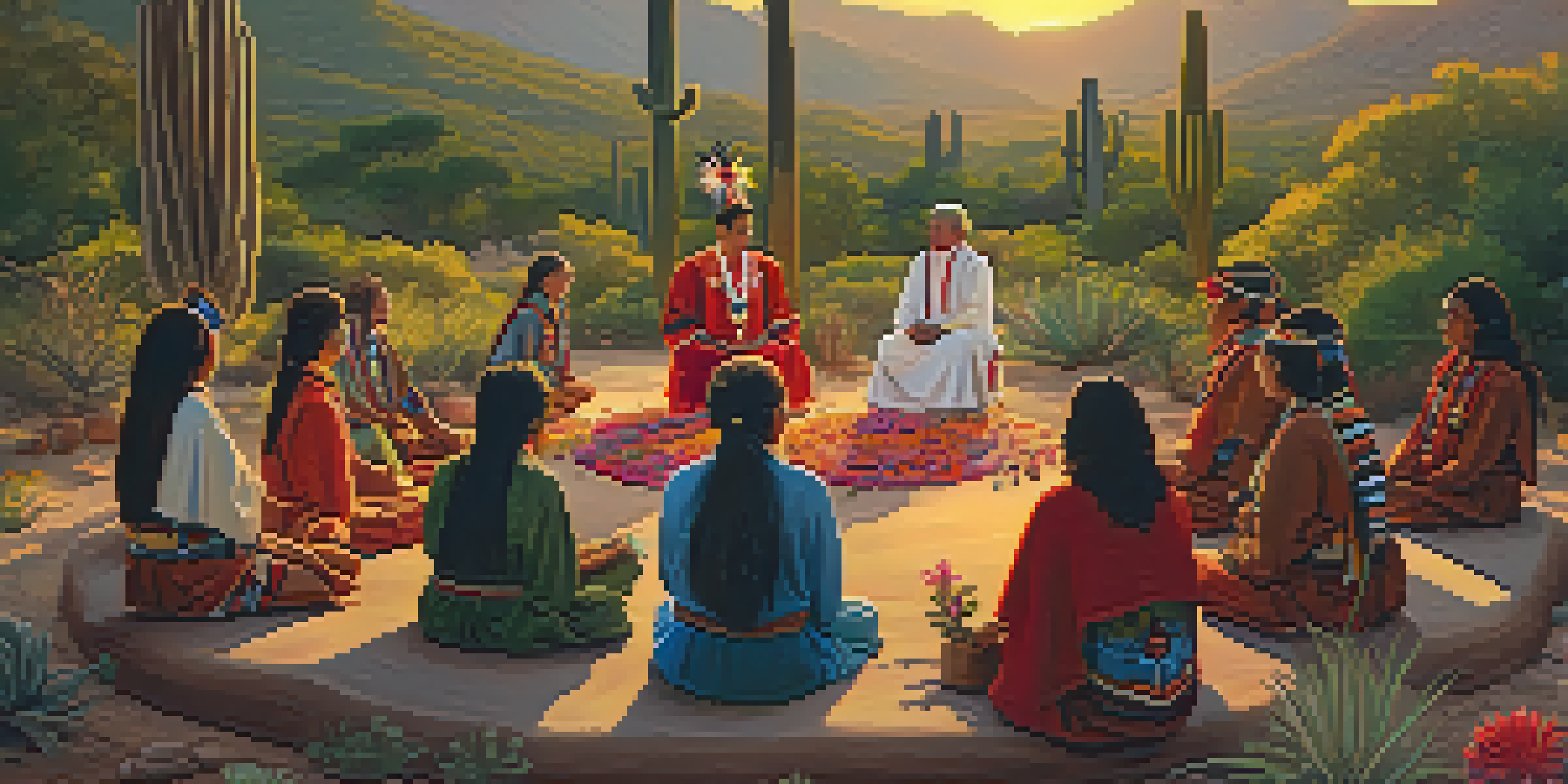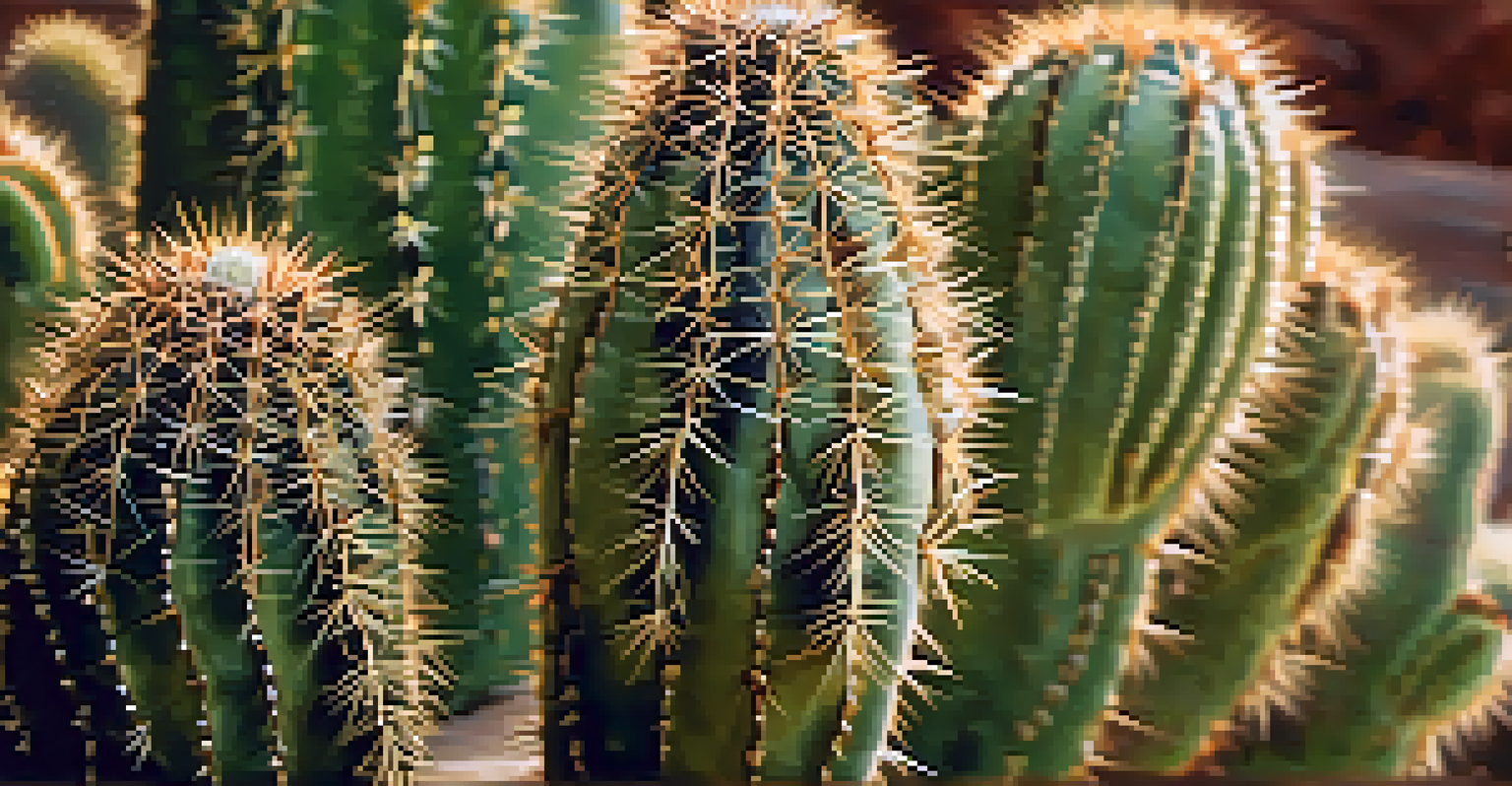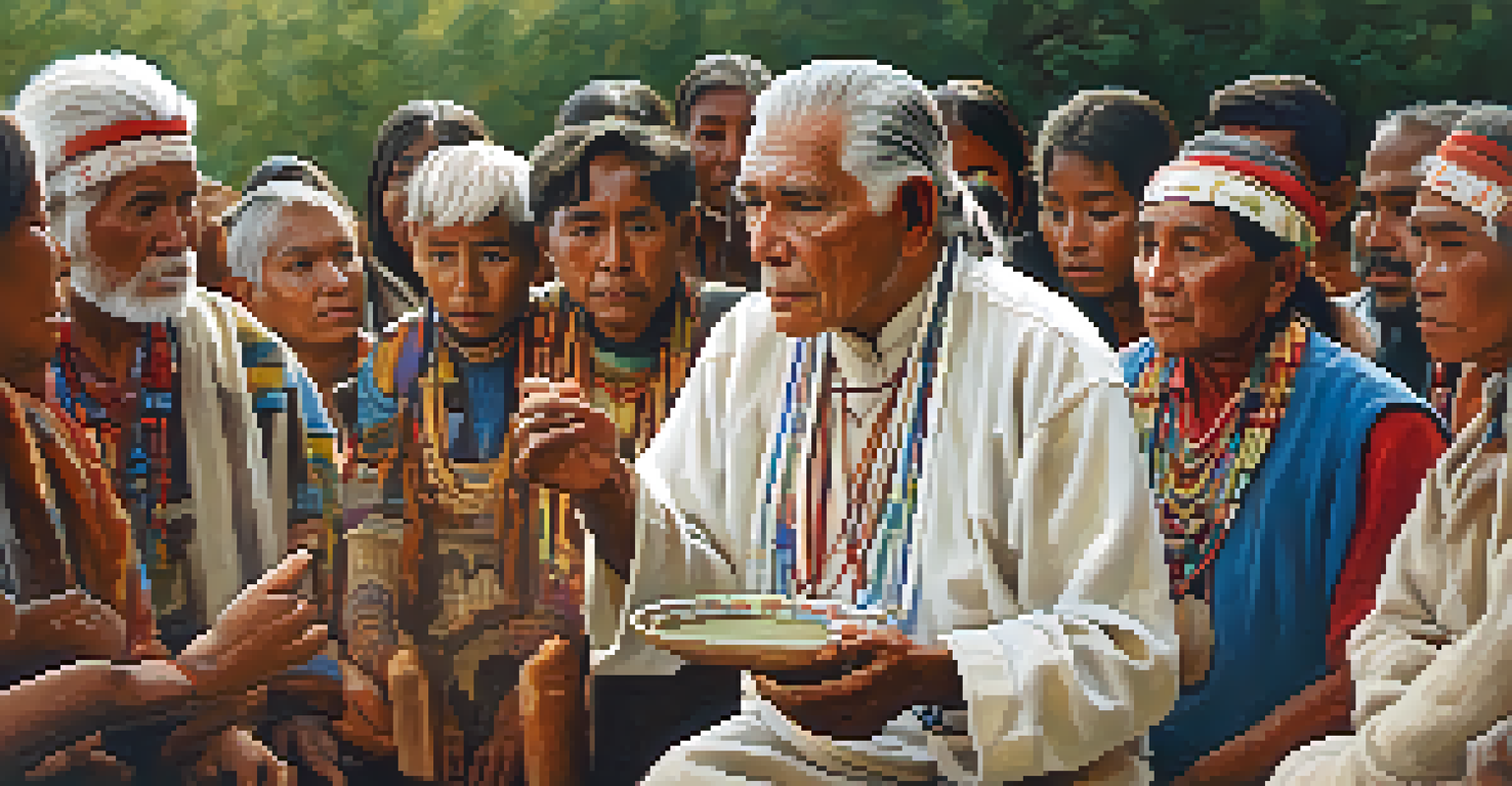Cultural Resilience Through Peyote Ceremonies and Practices

Understanding Peyote and Its Cultural Significance
Peyote is a small cactus known for its psychoactive properties, traditionally used by Indigenous peoples in North America. This plant is not just a substance; it's a vital part of spiritual rituals and cultural identity for many tribes. For communities like the Huichol and the Native American Church, peyote symbolizes a connection to heritage and the divine, representing a bridge between the physical and spiritual worlds.
The use of peyote as a sacrament is a way for Indigenous people to reclaim their identity and heritage in a world that often seeks to erase it.
The usage of peyote in ceremonies is deeply rooted in traditions that date back thousands of years. These rituals serve not only as a means to achieve altered states of consciousness but also as a way to reinforce cultural values and community bonds. By participating in peyote ceremonies, individuals find a sense of belonging and purpose, fostering resilience against external societal pressures.
Moreover, the cultural significance of peyote extends beyond the ceremonies themselves. It embodies the teachings and stories passed down through generations, linking the present to the past. This continuity is crucial for cultural survival and resilience, reminding participants of their identity and the strength of their ancestors.
The Role of Peyote in Healing and Personal Growth
Peyote ceremonies are often seen as healing experiences, where participants can confront personal challenges and traumas. The psychoactive effects of peyote can lead to profound insights, helping individuals gain clarity about their lives and emotions. This healing aspect is vital, especially in communities facing systemic issues like poverty and marginalization.

During these ceremonies, participants often engage in group sharing, which fosters a sense of community and mutual support. The act of opening up and being vulnerable in a safe space allows individuals to heal collectively, reinforcing social cohesion. This communal aspect is a powerful reminder that healing is not just an individual journey but a shared experience.
Cultural Significance of Peyote
Peyote serves as a vital link between Indigenous peoples and their spiritual heritage, reinforcing cultural identity and community bonds.
Additionally, the insights gained during peyote ceremonies can inspire personal growth and transformation. Many participants report feeling a renewed sense of purpose and direction after their experiences. This growth contributes to cultural resilience, as empowered individuals can better advocate for their communities and traditions.
Strengthening Community Bonds Through Shared Rituals
At the heart of peyote ceremonies is the emphasis on community. These events often gather individuals from various backgrounds within a tribe, fostering connections that go beyond individual experiences. The shared rituals create a collective identity, reinforcing the idea that everyone has a role to play in the community's wellbeing.
Cultural resilience is not just about survival; it's about thriving and maintaining the richness of our traditions and values.
Through shared experiences, participants can develop trust and understanding among each other. This bond is crucial in a world where many Indigenous communities face challenges from modernization and cultural erosion. By maintaining these rituals, communities can resist external pressures and reinforce their cultural identity.
Moreover, the communal aspect of peyote ceremonies encourages younger generations to engage with their heritage. As elders pass down the traditions, kids learn about their culture in an immersive and impactful way. This transmission of knowledge is vital for sustaining cultural resilience, ensuring that traditions are preserved for the future.
Peyote as a Symbol of Resistance and Identity
For many Indigenous peoples, peyote represents a powerful symbol of resistance against colonization and cultural assimilation. The continued practice of peyote ceremonies is a statement of cultural survival and defiance. It asserts that despite historical trauma, these communities remain connected to their roots and traditions.
Peyote ceremonies also serve as a platform for advocating Indigenous rights and sovereignty. By reclaiming their traditions, communities can challenge stereotypes and misconceptions about their cultures. This visibility can lead to greater understanding and respect from wider society, fostering a dialogue about Indigenous issues.
Healing and Personal Growth
Participating in peyote ceremonies provides individuals with profound insights that foster healing, personal growth, and communal support.
Additionally, the symbolism of peyote extends to personal identity. For many, participating in these ceremonies reinforces their sense of self and belonging. It’s a reminder that their identity is intertwined with their cultural practices, which are essential for maintaining resilience in a rapidly changing world.
The Interplay Between Modernity and Traditional Practices
In today's fast-paced world, many Indigenous communities grapple with the influence of modernity on their traditions. While challenges exist, peyote ceremonies provide a space where traditional practices can thrive amidst change. This interplay between old and new often leads to innovative adaptations of rituals that keep the essence of the ceremonies alive.
Some communities are incorporating contemporary elements into their peyote ceremonies, blending traditional songs with modern music or using social media to share their experiences. This fusion allows for the preservation of cultural identity while also making it accessible to younger generations who may be more attuned to modern influences.
However, it's essential to approach these adaptations thoughtfully, ensuring that the core values and teachings of the ceremonies are not lost. The challenge lies in balancing the preservation of tradition with the need for evolution, creating a dynamic cultural practice that resonates with both the past and the present.
Legal Challenges and the Future of Peyote Ceremonies
The legal status of peyote remains a contentious issue, particularly concerning its use in religious ceremonies. While some legal protections exist, many Indigenous communities still face obstacles in accessing peyote for their rituals. This struggle for legal recognition highlights the broader challenges Indigenous peoples face in preserving their cultural practices.
Advocacy efforts are underway to ensure that peyote remains available for ceremonial use. These campaigns are often led by Indigenous leaders who emphasize the importance of these ceremonies for community health and cultural resilience. By raising awareness about the significance of peyote, they aim to foster understanding and support from non-Indigenous allies.
Resistance and Identity
For many Indigenous communities, peyote symbolizes resistance against colonization and a reaffirmation of their cultural identity.
Looking to the future, it’s crucial to continue these conversations about legal rights and cultural preservation. Ensuring that peyote ceremonies can thrive is essential not only for the communities that practice them but for the rich tapestry of cultural diversity that they represent. The future of peyote ceremonies hinges on a collective effort to honor and protect these vital traditions.
Conclusion: Celebrating Cultural Resilience Through Peyote
Peyote ceremonies are far more than spiritual practices; they embody the resilience, strength, and identity of Indigenous communities. Through these rituals, participants find healing, connection, and a renewed sense of purpose, which are vital in navigating the complexities of modern life. The act of gathering together to share in these ceremonies serves as a powerful reminder of the importance of community.
As we celebrate these traditions, it’s crucial to recognize the challenges they face and support efforts to protect their practices. By understanding the significance of peyote ceremonies, we can foster greater respect and appreciation for Indigenous cultures and their ongoing journeys of resilience. Celebrating these rituals is a way to honor the past while looking forward to a brighter future.

Ultimately, cultural resilience through peyote is about more than just the ceremonies themselves; it's about the stories, connections, and legacies they create. By nurturing these practices, we contribute to a richer, more diverse world that values and respects the heritage of all its peoples.